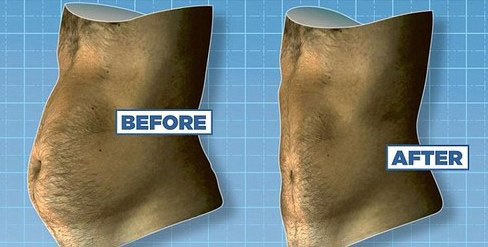Abdominoplasty
Another name known for “Tummy tuck” is Abdominoplasty., this is a type of surgery, is done to help flatten the abdominal region, and also by removing excess skin and body fat deposits, which may build up over time due to obesity, post pregnancy, age or heredity,these results are significant, if the individual does not regain weight again, and adheres, to a proper diet, and fitness program. However this procedure is considered to be highly invasive, with a considerable amount of downtime to follow, and it is one of the only body shaping, contouring procedures, which can produce the most substantial and predictable results.
There are three major components, of the abdominal region which are corrected, with this type of procedure, this includes correcting the loose and wrinkled skin, and also the excess fat tissue and muscle separation. This procedure is combined with liposuction, as these muscles walls are tightened.
An abdominoplasty varies from person to person, and the technique used is not the same. It depends on the type of incision made and technique used. For example a person who has less fat and no flab a mini tuck is best suited for the individual , but also keeping in mind the small pouch of fat tissue located just above or below the belly button.
Another type of procedure is an, dematolipectomy, this procedure, helps in removing the skin, but does not help to ,tighten the muscle walls,this type of procedure benefits people who are not so obese, but those people , who do have a lot of excess skin, that sags, at the same time,has decent muscle tone. With this procedure, does give you the same scar as a tummy tuck, or abdominoplasty.
Abdominoplasty, is tailored to meet the needs of different individuals, both in men and in women.

DESCRIPTION OF TREATMENT
This procedure is done under general anaesthesia, depending upon the individual patient preference, and the needs. The procedure may be done under regional or twilight anaesthesia, this depends on the type of abdominoplasty performed. The first step in a typical abdominoplasty procedure, is that it involves the cutting of the skin between, the bell button and the top of the pelvic region.
The physician will determine the exact incision location, with a patient before the procedure to explain the technique and course of action taken. During the procedure, the belly button stays in place, and the skin is re-draped around the belly button. After the muscles are surgically tightened from the pelvic bone to the ribs and fat tissue is removed, the skin above the belly button is specifically stretched to the pelvic area and stitched straight in place, the belly button is brought through the overlying skin to take up its original position,this is where some liposuction procedure is performed to remove an excess fat tissue and help reshape the abdomen.
The time required to perform an abdominoplasty depends on the amount of body fat and skin that needs to be removed, it usually takes between 2-5 hours. Usually one or two surgical drains are placed under the abdominoplasty incision to allow the fluids to properly drain for a few days after the procedure, the small incision made above the pubic bone, during the procedure, is used as an exit to for these drains. The recovery time from an abdominoplasty is usually 2-4 weeks, if you are into a job which is strenuous, then the recovery time is about 4-6 weeks.
SAFETY
It is important to be careful after the surgery, and to take proper care of the area, around the incision. Please follow the instructions given by your surgeon.
It is rare to experience any kind of infection, bleeding under the skin flap as well as blood clots, however it is possible. It is also necessary after the surgery, to check the body temperature, if the temperature rises, then it could mean that you have developed an infection. There are certain factors, like Poor blood circulation, diabetes, or heart, lung or liver disease, which can increase the risks of abdominoplasty surgeries. If the person is experiences a poor healing, or excess scarring or skin loss, a second operation would be required.